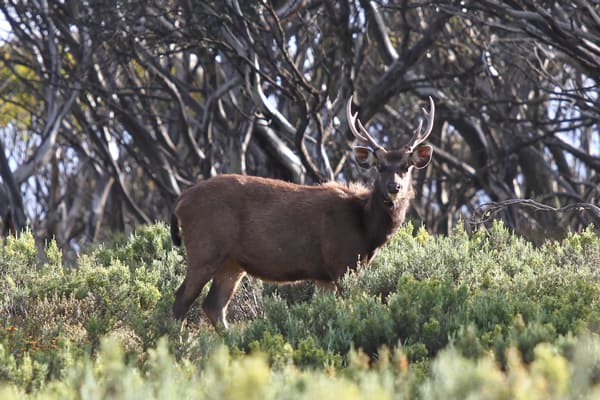The Invasive Species Council and former Greens leader Christine Milne have written to World Heritage governing body UNESCO in a plea for international help to address the ‘urgent and increasing threat’ feral deer now pose to the Tasmanian Wilderness World Heritage Area.
The letter warns that despite aerial surveys showing feral deer numbers have doubled to about 54,000 in just four years the Tasmanian Government is failing to take the rapidly expanding deer population seriously.
“It is imperative the special protection for deer under the Tasmanian Wildlife Act regulations be removed consistent with deer posing an increasing threat to the Tasmanian Wilderness World Heritage Area,” the council’s CEO Andrew Cox said today.
“The management plan for the Tasmanian Wilderness World Heritage Area warns that the prospect of eradicating an introduced species rapidly diminishes in the the World Heritage Area when the species becomes established beyond a narrow entry point.
“If the Tasmanian Government fails to take immediate action to eliminate deer from the Tasmanian Wilderness World Heritage Area and protect it from the growing threat of destructive feral deer the heritage values of this global jewel could be compromised.”
The Australian Government is also being called on to act. The letter to UNESCO states:
As a State Party to the World Heritage Convention, the Australian Government has an obligation to ensure that the requirements of the Convention are fully met. In particular, it is required to identify, protect, conserve, present, transmit, and, where appropriate, rehabilitate, the cultural and natural heritage of the TWWHA.
Ms Milne is an ambassador for the Invasive Species Council and former vice president of the International Union for Conservation of Nature (IUCN).
“In 2016 the Tasmanian Wilderness World Heritage Area Management Plan incorporated a recommendation that included undertakings to develop and implement contingency plans for potential incursions of high-risk species and, where feasible, implement and maintain management and eradication programs for priority species,” she said.
“This has not happened and at a special Senate hearing into the deer crisis in Tasmania earlier this month overwhelming evidence was presented about the increasing damage feral deer are doing throughout the state.
“During the special Tasmanian Senate hearing Professor Chris Johnson confirmed feral deer could easily occupy most of the Tasmanian Wilderness World Heritage Area and have large impacts on very sensitive plant communities.
“The risks and impacts of feral deer on the flora values of the Tasmanian Wilderness World Heritage Area have not been assessed and action to eradicate new deer incursions has not occurred. Australia has also failed to inform the World Heritage Committee accordingly.”
The letter to UNESCO says decisive action is needed immediately:
- Comprehensively survey the TWWHA and its adjoining boundary areas to assess the existing numbers and location of deer.
- Rapidly complete and implement a deer management strategy that keeps the Wilderness World Heritage Area and other high-value conservation areas deer free.
- Immediately engage professional shooters to start removal of deer from the Wilderness World Heritage Area.
- Declare deer as a pest animal in line with the rest of Australia.
- Remove the special protection for deer under Tasmanian Wildlife Act regulations.
A 2013 report warned that in Tasmania fallow deer pose an extreme risk of becoming a pest once established. This was backed up by expert evidence presented this month to the Senate inquiry.
The report said fallow deer may cause damage to the habitat of Tasmanian native fauna. Ground dwelling or nesting birds may be threatened by trampling of eggs and/or nests by fallow deer, and ground dwelling marsupials may be threatened by competition for food or trampling of habitat by deer.
Susceptible Tasmanian native species may include:
Birds: Brown quail, painted button quail, ground parrot, spotted quail-thrush and Richard’s pipit.
Mammals: Long-nosed potoroo, bettong, pademelon, red-necked wallaby, eastern-grey kangaroo, common wombat, spotted-tailed quoll, eastern quoll, Tasmanian devil, dusky antechinus, white-footed dunnart, southern brown bandicoot, eastern-barred bandicoot.
There are also listed threatened plants, threatened invertebrates and threatened vegetation communities that may be threatened by trampling and grazing by fallow deer.









